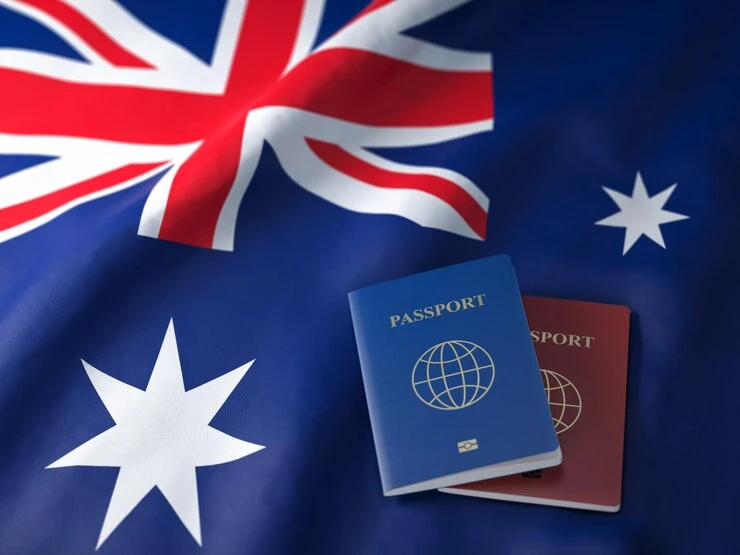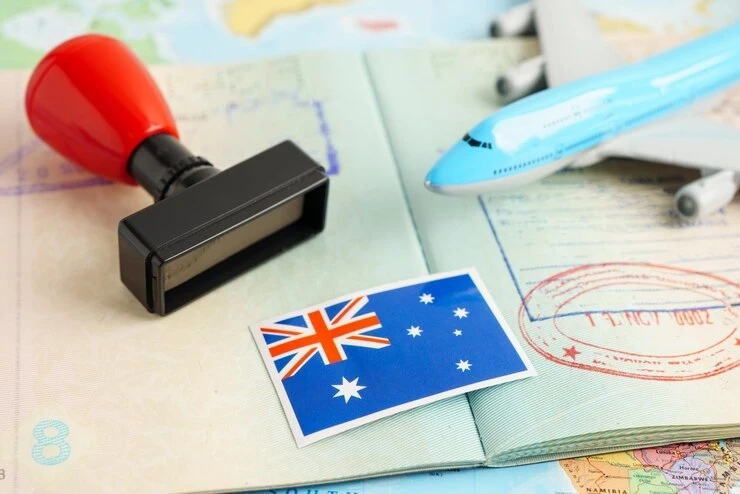Australia continues to be one of the favourite countries that the qualified workers look for work in another country. So the governmental policy of immigration and migration at the Australian country is highly developed and aimed at attracting the intelligent and skilled people through the following main visa types. These skilled visas, in addition to allowing people to live and work in Australia, offer a variety of opportunities to gain permanent residency, as well as a road to becoming an Australian citizen. In this article, we will discuss the different types of Australian skilled work visa, including the Subclass 189, 190, and 491, and the process involved in applying for each.
Types of Skilled Visas
1. Subclass 189 Visa: Skilled Independent Visa
The Subclass 189 Visa is one the most sought visas that pertains to skilled worker or for those wanting to work in an unknown nation. It is an immigrant visa allowing the subjects with the successful results to live and work in any part of Australia indefinitely. This independent skilled visa where one has the independence to apply for the visa without necessarily having an employer, sponsorship and support from the family and state or territory of residence making this the most flexible option.
2. Eligibility Requirements:
- Skills Assessment: A relevant authority must test the skills of a given applicant in order to ensure that he meets the necessary educational standard of practice of his profession.
- Occupation List: Its requirements include that your occupation must be on Australia’s Medium and Long-term Strategic Skills List (MLTSSL).
- Points Test: The applicants need to secure at least 65 points of the Points Test. The degree of compliance, age, qualifications, work experience, knowledge of English language, and other aspects deliver the points.
- Age: Applicants must be under 45 years of age at the time of invitation.
- English Proficiency: A competent level of English is required, typically demonstrated through tests like IELTS or PTE.
3. Subclass 190 Visa: Skilled Nominated Visa
- The Subclass 190 Visa is another permanent residency visa option. This visa requires applicants to be nominated by an Australian state or territory. While it shares many features with the 189 visa, it has additional benefits, particularly for those in occupations that are in demand in specific regions.
- Eligibility Requirements:
- State Nomination: For one to apply for the subclass 190 visa he or she must be nominated by the state or territory authority. Every state in the country has its list of the allowed occupations and nomination criteria.
- Skills Assessment: Similarly to the Subclass 189, the applicants must pass the skills assessment to check that their educational qualifications meet the Australian standards.
- Points Test: To pass the Points Test, applicants must gather at least 65 points, with state and territory nominations worth extra points.
- Age: This call states that applicants must be below 45 years when they are invited to apply.
- English Proficiency: Applicants need to be fluent in the English language and formally qualified.
4. Subclass 491 Visa: Skilled Work Regional (Provisional) Visa
- The Subclass 491 Visa is a provisional visa that permits skilled applicants to live and work in regional regions of Australia for some 5 years. The visa provides a means of obtaining permanent residency for those who qualify at the end of the three years, during which the applicant lives and works in the regional territory.
- Eligibility Requirements:
- State/Family Nomination: Applicants can be nominated by a state or territory government or can be sponsored by a relative residing in a regional zone.
- Occupation List: Your occupation must be on the ROL – the list of Occupations of Regional Significance that differ from the more general lists for the 189 and 190 visas.
- Skills Assessment: Like every other skilled migrant, qualification assessment is a requirement by the competent authorities.
- Points Test: Applicants must meet the minimum points threshold of 65 points.
- Age: Applicants must be under 45 years old at the time of invitation.
- English Proficiency: Applicants must demonstrate proficient English language skills.

The Application Process for Skilled Visas
While the specifics of the application process vary slightly depending on the visa subclass, there are general steps that apply to most skilled visa applications:
1. Skill Assessment
There are three assessment areas that must be passed before an applicant can submit an Expression of Interest (EOI). This is done by a particular assessing authority appropriate to your chosen profession. For instance, for IT qualifications, the Australian Computer Society (ACS) undertakes the assessment of IT professionals, and for engineering qualifications, Engineers Australia assesses them.
The aim of the skills assessment is to establish if your skills, qualifications and experience are recognized to comply with the Australian standards. This is important as you cannot go any further without a positive skills assessment and this is to apply for skilled visa.
2. Expression of Interest (EOI)
The second step following passing a skills assessment is to lodge an Expression of Interest (EOI) through the Australian immigration department’s SkillSelect system. The EOI is an expression of interest that we have for the chance of being granted a skilled visa.
In the EOI, you will be required to:
- Include personal information, education, professional experience and skill set among the requirements to keep in the record.
- Nominate the visa subclass you wish to apply for.
- Choose if you would like to be nominated for state or territory (for subclasses 190 and 491).
Once your EOI is submitted, it will be ranked based on the points you have accrued. Only the highest-ranking EOIs will receive invitations to apply for a visa.
3. State or Territory Nomination (if applicable)
For the Subclass 190 and Subclass 491 visas, you must apply for nomination from an Australian state or territory. Each state or territory has different requirements based on its skills shortages and economic needs. The nomination process typically involves providing evidence that your skills match the state’s or territory's occupation list and that you meet the specific criteria for that region.
4. Invitation to Apply
If your EOI is successful and you are invited to apply for a skilled visa, you will receive an invitation from the Department of Home Affairs. This invitation will specify the visa subclass you are being invited to apply for, and you will have 60 days to submit your application.
5. Submit Visa Application
Upon receiving your invitation, you must submit your visa application. This includes providing the following documentation:
- Proof of your skills assessment.
- English language test results.
- Health and character certificates.
- Evidence of employment and qualifications.
- Police clearances from any countries you have lived in for 12 months or more in the past 10 years.
6. Health and Character Checks
All applicants must undergo health checks and provide police clearance certificates to ensure they meet the health and character requirements for a visa. Medical exams are typically required for all family members included in the application.
7. Visa Outcome
Once your application has been processed, the Department of Home Affairs will make a decision on your visa. If your application is approved, you will be granted the visa and can begin planning your move to Australia. If your application is refused, you may be able to appeal the decision or apply for a different visa.
The Benefits of Skilled Visas
There are several advantages to applying for an Australian skilled visa, including:
- Access to Australia’s High-Quality Healthcare and Education Systems: Skilled visa holders and their families are eligible for Australia’s public healthcare system (Medicare) and can access world-class education.
- Pathways to Citizenship: Many skilled visas provide a direct pathway to permanent residency and eventually Australian citizenship.
- Opportunity to Live and Work in Australia: Skilled visa holders can live, work, and study in Australia, contributing to the local economy and experiencing the country’s high standard of living.
Conclusion
Australia’s skilled immigration program provides a structured pathway for professionals to migrate to Australia and contribute to the country’s thriving economy. Whether applying for the Subclass 189, 190, or 491 visa, it’s essential to understand the eligibility criteria and follow the proper steps to maximize your chances of success. With the support of experienced Australian migration lawyers, you can navigate the application process with confidence, ensuring a smooth transition to your new life in Australia.


